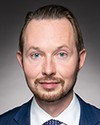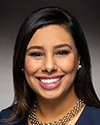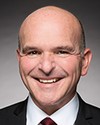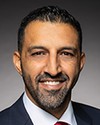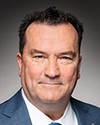Just to give colleagues a little context about community leagues, they were founded around the same time the city was founded, in about 1904. In the city of Edmonton we have 160 registered associations that call themselves community leagues. They're all volunteer-run, with about $100 million plus in assets, with community gardens and what have you.
In my riding of Edmonton Centre, there are 26 community leagues. If you take a look along the Yellowhead freeway, there are 18 community leagues, the entire length of the Yellowhead freeway, that use it as the north to south boundary. Nine community leagues south and nine community leagues north are using the Yellowhead as the boundary.
How did community leagues grow? They grew around their actual neighbourhood. The community leagues themselves are saying that this is a man-made geographic border. If you look at the maps we sent and that I know you all have, it literally is like a man-made river that runs through the city. It's a river of traffic. It's a river of goods. I know what it's like when I travel east or west in that riding. You actually have to make a conscious decision as to which road you're going to take to get through the tracks. You're not turning on every street corner to get through the tracks, because otherwise the trains wouldn't run. It is a geographic barrier.
If you look at postal codes, Ms. Sahota, they use the Yellowhead as north and south boundaries for postal codes. For businesspeople, if you look at the Kingsway business improvement association, which is in my riding on the north side of Edmonton Centre, the Yellowhead is the natural border there. It is a natural border. It's a community border. You don't see kids crossing that highway to go to school. It doesn't make any sense. There would be not a safety issue but just a community of identity issue.
In that sense, it's our contention that from a community identity perspective and a community of interest perspective, as Mr. Chahal said, the northern boundary should be maintained as Yellowhead.

